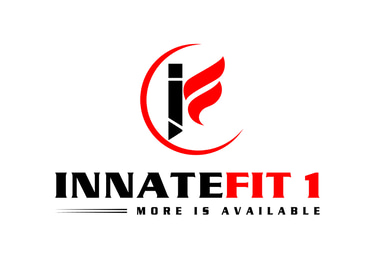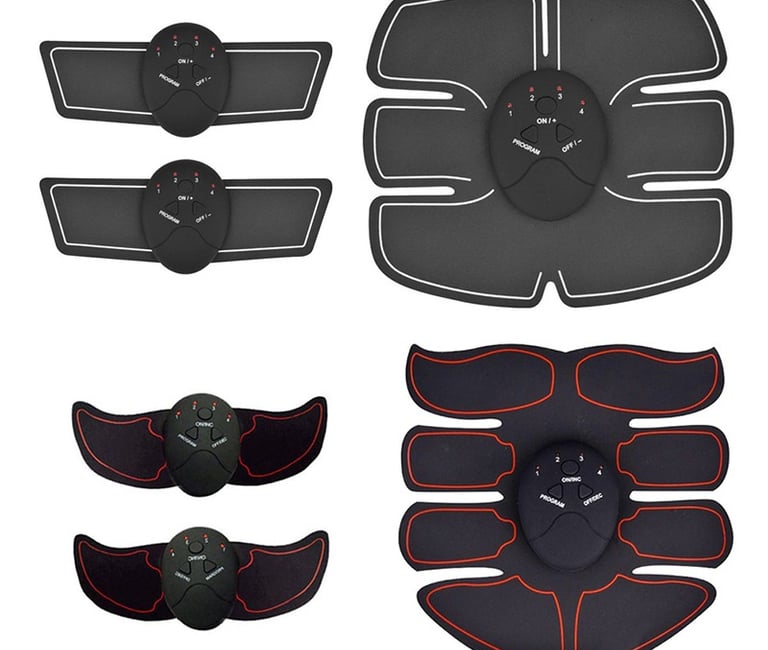Visit Innatefit1.com for exercise wear and equipment!!!
Frost & Fire: The Winter Mini Cut Blueprint to Melt Fat and Forge Strength
Master the winter mini cut with this evidence-based guide to accelerate fat loss while preserving lean muscle and strength. Learn how cold weather affects metabolism, optimize vitamin D and supplements for cutting in winter, and follow a practical fat loss and strength training meal plan plus sample workouts. Transition smoothly into spring with reverse dieting for long-term gains.
SELF-HELPWORKOUTSHEALTHY LIFESTYLEMEN'S HEALTHFITNESS TIPSWEIGHT LOSS STRENGTH TRAINING
Joseph Battle
8/14/20259 min read


Introduction — Defining the Winter Mini Cut and Its Purpose
A winter mini cut represents a short, focused period of calorie restriction designed to accelerate fat loss while preserving as much lean muscle as possible. Unlike prolonged dieting phases, a mini cut typically lasts 2–6 weeks and targets a modest calorie deficit, producing measurable results without significant metabolic slowdown. In winter, this approach provides an efficient way to reduce body fat while maintaining high training intensity, allowing you to enter spring stronger and leaner.
Moreover, prioritizing health and fitness during the colder months delivers both physical and psychological benefits. While many people lose training consistency during winter, a planned mini cut encourages discipline, improves body composition, and builds momentum for longer-term goals. Consequently, a winter mini cut can produce visible changes, reinforce healthy habits, and prepare you for a successful reverse dieting approach in spring.
The Science Behind a Winter Mini Cut: Why Cold Weather Changes the Equation
The effects of colder weather on metabolism are multifaceted. First, thermogenesis increases in cold environments; your body expends more energy to maintain core temperature. However, modern heating and insulated clothing often blunt this effect.
Therefore, while winter can slightly elevate baseline calorie expenditure, the fundamental metabolic changes arise from behavioral shifts—people tend to move less, consume richer foods, and experience more sedentary time. As a result, intentional planning becomes critical to offset seasonal tendencies and maximize fat loss.
Additionally, vitamin D plays an influential role in body composition. Reduced sun exposure during winter commonly lowers vitamin D levels, which can impact mood, appetite regulation, and metabolic function.
Several studies link adequate vitamin D status with improved insulin sensitivity and better body fat regulation. Consequently, assessing and optimizing vitamin D supports both fat loss and recovery during a winter mini-cut, especially when aiming to preserve lean muscle and training output.
Seasonal affective disorder (SAD) also affects weight and motivation. The reduced daylight and colder weather can increase cravings for calorie-dense comfort foods and reduce desire for physical activity.
Therefore, addressing mood through light therapy, structured routines, and social support can counteract the behavioral drivers of winter weight gain. In turn, those strategies enhance adherence to a short-term mini cut and improve outcomes.
Finally, empirical evidence supports mini-cuts when executed correctly. In the short term, moderate deficits minimize catabolic signaling compared to prolonged dieting, which drives greater muscle loss and metabolic adaptations. Moreover, combining resistance training with strategic protein intake helps preserve performance and lean muscle mass.
Thus, a winter mini cut—balanced across nutrition, training, and recovery—can deliver fat loss while maintaining strength during a caloric deficit.
Setting Goals and Creating a Plan: From Intent to Execution
First, identify personal goals and motivations with clarity. Are you focused primarily on losing a few pounds of body fat, improving muscle definition, or maintaining strength through a caloric deficit? Establish specific, measurable targets—for example, a 4–6% reduction in body fat or a 4–8 lb weight loss over four weeks. Next, align these goals with your schedule, social commitments, and preferred training routine so you maintain consistency even during holidays or travel.
Calculating calorie deficit and macros requires precision to ensure progress without excessive muscle loss. Begin by estimating your maintenance calories using a reputable formula or by tracking them for 2 weeks. Then target a 15–25% daily calorie deficit for a mini cut; this range strikes a balance between fat loss speed and strength preservation during caloric deficit.
For macronutrients, prioritize protein at roughly 1.6–2.4 g/kg body weight (0.7–1.1 g/lb) to support lean muscle retention. Allocate the remaining calories between carbohydrates and fats according to preference, but keep carbs adequate around workouts to fuel performance and recovery.
Incorporating strength training to maintain muscle mass forms the backbone of any effective mini cut. Schedule 3– 5 resistance training sessions per week that focus on compound movements and incorporate progressive overload.
During the mini cut, target maintaining training intensity (load and effort), even if you reduce volume slightly. Moreover, include accessory work to address weak points, improve stability, and enhance mobility, so you can sustain performance and reduce injury risk.
Rest and recovery remain non-negotiable. Sleep, stress management, and deloading cycles protect your hormonal environment and attenuate catabolic processes. Aim for 7–9 hours of high-quality sleep, schedule recovery days, and leverage active recovery such as mobility sessions or low-intensity walking. These tactics enhance training quality, support hormonal balance, and help you adhere to the mini cut without undue fatigue.
Sample meal plan and workout routine
To help you translate theory into practice, below is a sample fat loss and strength training meal plan, along with a complementary week of training suitable for most trainees during a 4-week mini-cut. Adjust portion sizes to meet your calculated calories and macros.
Sample daily meal plan (approx. 1800–2200 kcal, adjust to needs)
Breakfast: 3 egg whites + 1 whole egg, 1/2 cup oats, 1/2 cup mixed berries, 1 tbsp almond butter (high protein, moderate carbs)
Mid-morning snack: Greek yogurt (200 g) with 10 g whey protein and a small apple
Lunch: Grilled chicken breast (150–200 g), 1 cup quinoa or sweet potato, large mixed salad with olive oil and vinegar
Pre-workout: Banana + 15–20 g whey protein
Post-workout: Whey protein shake (25–30 g protein) + 1 rice cake or small carbohydrate source
Dinner: Salmon (150 g) or tofu, 2 cups steamed vegetables, 1 tbsp olive oil, 1/2 cup brown rice
Optional evening snack: Cottage cheese (100–150 g) or casein-style protein for overnight amino acid availability
Weekly workout routine (example)
Day 1: Upper body heavy — Bench press 4x5, Barbell row 4x6, Overhead press 3x6, Pull-ups 3xmax
Day 2: Lower body strength — Squat 4x5, Romanian deadlift 3x6, Bulgarian split squat 3x8, Core work
Day 3: Active recovery or cardio (30–40 min brisk walk or light cycling)
Day 4: Upper body hypertrophy — Incline dumbbell press 4x8, Seated cable row 4x8, Lateral raises 3x12, Biceps/triceps 3x10–12
Day 5: Lower body dynamic — Deadlift 3x3, Front squat 3x6, Hamstring curl 3x10, Calves/core
Day 6: HIIT session or metabolic conditioning (20 minutes)
Day 7: Rest or mobility session
Strategies for Maximizing Fat Loss Without Sacrificing Strength
Incorporating HIIT and cardio can accelerate fat loss while preserving time for quality resistance training. High-intensity interval training (HIIT) stimulates fat oxidation and improves cardiorespiratory fitness, and you can use it 1–2 times per week during a mini cut. However, avoid excessive steady-state cardio that undermines recovery; instead, prioritize short, intense sessions that complement your resistance training.
Tracking progress and making adjustments ensures you stay on course. Use multiple metrics—including weekly body weight, circumference measurements, progress photos, and strength logs—to evaluate trends. If fat loss stalls for two weeks, first check adherence and recovery.
Then reduce calories by 100–200 kcal, increase non-exercise activity thermogenesis (NEAT), or add a short cardio session. Importantly, avoid aggressive calorie cuts that compromise lean muscle retention and training performance.
Nutrition and hydration remain primary determinants of success. Adequate protein intake supports muscle protein synthesis, while strategic carbohydrate timing optimizes performance during training sessions. Moreover, maintaining proper hydration improves cognitive function, digestion, and workout intensity. During winter, you may not feel as thirsty, so be conscious of your fluid intake—aim for at least 2–3 liters per day, more around training sessions.
Finally, staying motivated and consistent depends on practical behavioral strategies. Set micro-goals, use meal prepping to reduce decision fatigue, and cultivate an accountability system such as training partners or coach check-ins.
Also, implement environmental controls—keep trigger foods out of immediate reach and plan alternatives for holiday gatherings. These tactics increase adherence and make your mini cut sustainable through the cold months.
Maintaining Strength During a Mini Cut: Training and Recovery Tactics
Progressive overload remains the primary method for preserving or even increasing strength during a caloric deficit. Although you might not add weight to the bar every session, you can pursue other markers of progress—such as increased bar speed, better technique, or more efficient sets. Therefore, structure training to emphasize heavy, low-rep sets on core lifts and consider slight reductions in total weekly volume to protect recovery.
Compound lifts and resistance training should form the foundation of training for fat loss. Squats, deadlifts, bench presses, overhead presses, and rows recruit large muscle groups, stimulate systemic anabolic signaling, and maximize caloric expenditure per session.
Consequently, prioritize these movements and place them early in workouts when you are freshest. Additionally, include accessory exercises to target hypertrophy and joint health while maintaining lean muscle mass.
Implement strategies for preventing muscle loss. First, prioritize protein and distribute it evenly across meals. Second, maintain a consistent training frequency for muscle groups—training each muscle 2–3 times per week supports net protein balance.
Third, incorporate refeed days (higher carbohydrate intake) every 7–14 days to replenish glycogen, support thyroid function, and help maintain training intensity. These approaches reduce the risk of catabolism while promoting continued performance.
Adjust training during a mini cut with flexibility. If strength dips occur, reduce training volume by 10–20% first rather than cutting intensity. For example, perform fewer sets but maintain high weights. Additionally, monitor subjective recovery and use deload weeks when necessary. In this way, you preserve neuromuscular adaptations and prevent prolonged decreases in maximal strength.
Supplements and Recovery: Tactical Aids for a Winter Cut
Supplements for cutting in winter can offer modest benefits when used in conjunction with a solid nutrition plan and regular training. First, vitamin D supplementation addresses seasonal deficiencies and supports mood, immune function, and possibly body composition.
Second, whey protein or a high-quality protein powder provides convenient, high-biological-value protein to help you meet your daily targets. Third, creatine monohydrate maintains intracellular energy stores and has robust evidence supporting its role in strength preservation during caloric deficits.
Additionally, consider omega-3 fatty acids to support recovery and inflammation modulation, especially if your diet is low in fatty fish. Caffeine can enhance workout performance and thermogenesis if used judiciously; therefore, time caffeine intake around training and avoid late-night consumption that disrupts sleep. Finally, beta-alanine and citrulline may help improve training volume and endurance, which can aid in maintaining quality sessions during a mini cut.
Recovery strategies complement supplements. Prioritize sleep—poor sleep increases appetite and reduces recovery capacity. Utilize evidence-based sleep hygiene practices, including maintaining consistent sleep schedules, limiting screen exposure before bedtime, and adjusting the bedroom temperature to optimal levels.
Moreover, incorporate active recovery and mobility sessions to preserve the range of motion and manage soreness. These investments in recovery ensure you can maintain high training quality and protect lean mass.
Overcoming Challenges and Staying on Track: Practical Solutions for Winter Obstacles
Dealing with cravings and hunger requires proactive tactics. First, increase dietary protein and fiber to enhance satiety. Second, use volumetric eating—load meals with low-calorie vegetables and broth-based soups that create fullness without high calories. Third, plan small, satisfying treats within your weekly calories so you don’t feel deprived. In this manner, you reduce impulsive eating while sustaining adherence to your fat loss goals.
Managing social events and holiday temptations involves strategic planning. Decide your priorities before attending gatherings: aim for portion control, choose higher-protein options, and moderate your liquid calories. Alternatively, budget calories for a social meal and return to your plan immediately afterward. These choices minimize the impact on progress and sustain momentum through the winter season.
Coping with potential strength loss requires a measured approach. Expect small, transient reductions in absolute strength given lower calories, but remember that neuromuscular efficiency and technique generally remain stable. If you experience persistent declines, check your calorie adequacy, protein intake, and sleep patterns.
Then adjust training volume or incorporate short refeed strategies to resuscitate performance. Furthermore, track relative performance (RPE and bar speed) rather than absolute weight alone to capture meaningful progress.
Ultimately, effective strategies for staying motivated and overcoming setbacks include setting micro-goals, leveraging community accountability, and practicing mental reframing. When progress stalls, reassess objectively—use data, not emotion, to guide changes. Celebrate small wins such as improved sleep, consistent workouts, or an extra rep on a significant lift. By focusing on process over outcomes, you maintain momentum and return stronger from any winter dips.
Reverse Dieting Into Spring and Long-Term Sustainability
Reverse dieting into spring helps restore calories gradually while minimizing rapid fat gain. Instead of jumping back to maintenance immediately, add 50–150 kcal per week while monitoring weight and body composition. This approach allows your metabolism to adapt gradually and sustain the lean mass you worked to preserve. Moreover, protect high training quality during the reverse so you consolidate strength gains and lean tissue.
As you increase your calorie intake, shift your priorities toward performance and hypertrophy. Gradually increase the volume of resistance training to capitalize on the refeeding window and stimulate muscle growth.
Additionally, increase carbohydrate availability for heavy training days to maximize intensity and recovery. When implemented thoughtfully, reverse dieting in spring transitions you from a short-term fat loss phase into a progressive muscle-building period without unnecessary fat regain.
In the long term, view the winter mini cut as one tool in a broader strategy for managing body composition. Cycle through focused periods of deficit and growth with planned maintenance phases, which reduces metabolic adaptation and psychological fatigue. Importantly, integrate lifestyle changes—such as improved sleep, consistent movement, and sustainable nutrition patterns—that persist beyond the mini cut. In this way, you convert temporary discipline into durable habits that support lifelong health and performance.
Conclusion — The Winter Advantage: Leaner, Stronger, and Ready for Spring
In summary, a winter mini cut provides a strategic approach to achieving fat loss while preserving lean muscle and maintaining training quality. By understanding how cold weather, vitamin D, and seasonal mood shifts influence behavior and physiology, you can design a plan that accounts for both metabolic and psychological realities. With calculated calories, prioritized protein, resistance training, and deliberate recovery, you preserve strength during a caloric deficit and deliver meaningful changes.
Finally, approach this mini cut as a finite, high-quality phase that prepares you for greater gains in spring. Utilize evidence-based strategies—such as resistance training for fat loss, adequate protein intake, and sensible supplements for cutting in winter—to transition seamlessly into growth and performance goals. Above all, listen to your body, remain flexible in your methods, and adopt sustainable habits so you emerge from winter not only leaner, but stronger.






